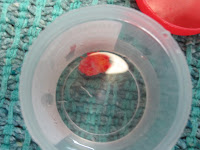On a video uploaded by Dr Vikram Singh Yadav, I saw many people asking that what is the difference between abscess and sebaceous cyst. So I thought that I would create this post to explain you the difference between them. Ill come directly to the point here.
An abscess is cavity filled with pus. It occurs due to an unresolvable infection or inflammation which body, macrophages to be specific, cant kill or cant get rid off. So to prevent the spreading of the infection or inflammation our body tries to wall off the inflammation. This creates a cavity which is full of neutrophills and necrotic derbies. These present as painfull red warm swellings over various areas of body or at the injury site. An abscess could accompany with fever, lethargy and other constitutional symptoms.
Treatment of abscess is incision and drainage, betadine packing, noninflammatory drugs and antibiotics.
An abscess is cavity filled with pus. It occurs due to an unresolvable infection or inflammation which body, macrophages to be specific, cant kill or cant get rid off. So to prevent the spreading of the infection or inflammation our body tries to wall off the inflammation. This creates a cavity which is full of neutrophills and necrotic derbies. These present as painfull red warm swellings over various areas of body or at the injury site. An abscess could accompany with fever, lethargy and other constitutional symptoms.
Treatment of abscess is incision and drainage, betadine packing, noninflammatory drugs and antibiotics.
